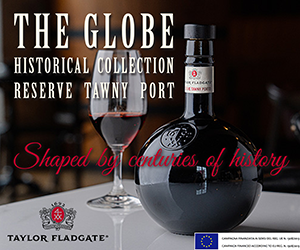The 2012 vintage is bringing lovers of Austrian wine exciting, fruity and full-bodied wines.
The 2012 vintage is bringing lovers of Austrian wine exciting, fruity and full-bodied wines. Beautiful weather conditions nurtured healthy and ripe grapes, even though the dry Summer heat created the need for plenty of attention later on in the cellar in order to ensure clean fermentation as well as fresh, pure aromatics and flavours. Also, the moderate acidity is requiring a certain sensitivity in the cellar in order to successfully bring out the spiciness together with the ripe fruit. Not only are the young wines triumphing with bigger fruitiness, but also many of the wines are showing excellent ageing potential.
Statistik Austria (Statistics Austria) estimates that the current harvest has yielded a total of 2.1 million hectoliters, which is around 400,000 hl lower than the five-year average. This can be attributed for the most part to the late frost in May, which created significant losses in Niederösterreich.
Niederösterreich (Lower Austria)
The late frost that occurred during the night of May 18th set a negative tone to the beginning of the season in Niederösterreich, especially in the Pulkautal (Pulkau Valley) in the Weinviertel, where more than 6000 young vines were affected. However, the Summer was dominated by dryness and moderate heat, which had a positive impact on the vegetation. The concerns of strongly reduced acidity could not yet be confirmed.
The weather for the harvest was similar to the constantly beautiful conditions of 2011, allowing the actual harvest dates to be set according to the degree of ripeness without fear of any approaching bad weather fronts.
Very healthy and loose grapes were picked wherever hail did not create any problems.Still, when it came to pressing in the cellars, the grapes gave sparing amounts of juice. Focused acidity management, also due to the allowing of the possibility of acidification this year, ensured good and clean fermentation. Thanks to the experience of the wine makers, there were fewer potential problems with fermentation. Difficulties could have occurred due to a lower nutrition content of the grapes caused by the dry Summer.
The only real downside was the low harvest in Niederösterreich, which totaled 1.1 million hl instead of the usual 1.6 million hl.
Burgenland
The Burgenland clearly held the top spot when it came to the weather and the harvest. A Spring with good humidity followed the mild Winter. The sporadic occurrences of frost were quite bearable, as was the moderate dose of hail. Early flowering led to an early harvest that began in the first half of August. The result: a quantity that correlates with a good, regular vintage; in any case, the 750, 000 hl total is more than that of last year's harvest. The beautiful weather during the harvest allowed for a good working speed without any time pressure via threatening weather fronts or grape rot. The optimal health of the grapes made great quality possible, with the white wines turning out fruity, full-bodied and very clean and the red wines presenting themselves as deep, dark and yielding remarkable power.
On both sides of the Neusiedler See (Lake Neusiedl), very good quantities of high quality Spätlese and Auslese grapes were harvested. The grapes for higher Prädikat levels - botrytised and ice wines - are still largely dependent on conditions yet to come in the vineyards. The next few weeks certainly will determine the 2012 sweet wine vintage.
Steiermark (Styria)
This year left a significant mark on Austria's most southern state. The late frost on Easter Monday led to a significantly smaller-than-usual-harvest of Muskateller. The frost that occurred on May 17th -18th left only little damage. A more significant impact was made by dry weather conditions. July brought very different conditions regionally - from very dry to 300 ml rainfall. In Weststeiermark there were many thunderstorms, whereas in Südsteiermark, no thunderstorms of any kind were registered.
The harvest began on August 20th, and from September 10th on, grape picking became more intensive: from this, it can be shown that wines with a high level of sugar will not be too high in alcohol and will maintain a good level of fruitiness. It was shown that the grapes remained very loose and the rain at the end of harvest did not leave any traces on the grapes. While this has meant that the quality of the wine will be very good, the harvest itself can be called average with a total of 195.000 hl.
The Styrian vintage 2012 can be characterised by beautiful spiciness and full body, with Sauvignon Blanc having ripe aromas and flavours, Muskateller as very aromatic and dense, and Weissburgunder having a captivating, strong and nutty character. Also the Steirischer Junker (the first young wine) can be expected to have plenty of fruitiness.
Wien (Vienna)
The weather conditions were considerate in the Vienna wine growing area. Only in Stammersdorf was there some damage - around 10 ha - because of the major frost night of May 17th - 18th. Other than that, there was no hail and the climate conditions remained favourable right up to the harvest. April brought enough warmth and even a rainy July could not harm the vines. This enabled a high quality vintage - one which the Viennese winemakers began earlier than usual in order to make wines that are fruity, full-bodied and with a moderate level of alcohol. Nevertheless, also in Vienna the quantity remained below average, with a total of only around 22,000 hl.
"This year's wines are outstanding with their aroma and density," says Willi
Klinger, general manager of the Austrian Wine Marketing Board. "The quantity losses affected mainly the Grüner Veltliner. I hope very much that next year's harvest - 2013 - will be a normal one so that Austrian winemakers can develop their market share further and at interesting price levels."
Download
Harvest Report 2012_November figures<http://media.austrianwine.com/pindownload/login.do?pin=AYYQC>
Press information
Austrian Wine Marketing Board

 quicksearch
quicksearch






